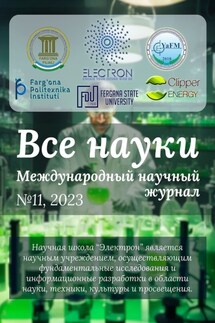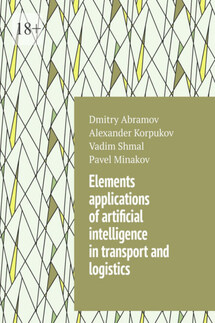Все науки. №11, 2023. Международный научный журнал - страница 4
Exactly as the analysis was carried out for reaction (1), a similar algorithm is carried out for reaction (51), but, of course, the Coulomb barrier is not determined, since there is no directed particle for this reaction, therefore the yield of this reaction (52) is determined, and then the kinetic energy for all reaction products (53).
And one of the final points of the analysis of the decay reaction is the indication of the law of nuclear decay (54).
In this case, a certain stable nucleus and light particles are obtained, with a certain kinetic energy and a known velocity (55).
If the real core is radioactive again, although such cases are quite rare, the same algorithm for analyzing decay reactions works for them. In this case, each of the particles will also repel, receiving an additional outgoing Coulomb barrier, which is taken into account.
In this case, for the nucleus, the kinetic energy and the temperature generated from it are explained by means of the already derived patterns for the formed part (56) and for the entire target (57), and for light particles, the kinetic energy is known, as well as the charge through (58) and current (59).
However, this does not end the analysis of the reaction, since only one channel of the nuclear reaction has been analyzed, which means that it is worth paying special attention to all possible different combinations (60).
In this case, all possible variations of nuclear reaction channels are expressed as a matrix product, however, of course, most of them, especially those associated with heavy nuclei, are unlikely, but even this is not a complete list, since there are also reactions when the kinetic energy of directed particles becomes sufficient to create new particles. In addition, do not forget the cases when the output of particles increases, that is, 3, 4, etc. are already formed. the products of nuclear reactions, but only for their recording it was already necessary to use complex n-dimensional matrices.
Therefore, in practice, only the most probabilistic ones are left (61).
So, if the moment of formation of new particles is not taken into account, most often cases of the formation of an integral nucleus, the formation of a proton, neutron, electron, positron, deuteron, triton or other similar particles are taken (61). For each of these reactions, the output of the nuclear reaction channel is calculated for all possible enumerated combinations, unlike multidimensional cases and particle formation (62) and for more probabilistic channels of the nuclear reaction (63), along with the threshold of the nuclear reaction channel also for absolutely all cases except the above (64) and more probabilistic channels presented (65).
This is how the corresponding expressions were determined for all the presented channels of the nuclear reaction, it is worth taking the true formula (66), which represents the sum of the products of all the outputs of the channels by a certain number.
Moreover, one of the reaction channels was previously analyzed on a full scale, from which the value of the percentage efficiency of this channel (29) was obtained from the difference of which the required indicator is calculated. The present expression shows that each channel has its own percentage of efficiency, which in total is 100% of the effectiveness of the entire reaction.






